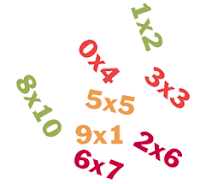Year-end like a Pro with Quick Books
There are a few things I like to do at year end
for my clients, just to get their files tidied up.
Now is a wonderful time
to review the work. Look for areas that need clean-up. Again,
preliminarily see if there is any place you can spend, if you have a decent
profit sitting on the books and some good cash flow.
It’s a good time to look
it over and maybe make those purchases before the year closes for your
particular business.
If you are a business
owner with QBO Plus, Essentials, or Simple Start and don’t have QuickBooks
online accountant version, you can still manage to investigate the troublesome areas
in QuickBooks. It will just take some extra steps and super-sleuthing skills to
get you there.
Review your accounts
looking for anything that seems to be in the wrong column. What I mean by that
is if you are looking at an asset with a credit balance or a liability with a
debit balance, something is probably wrong. You will also see them with a
negative balance. Unusual balances are generally a red flag that something is
not right.
2. Assets/Depreciation and
Prepayments
Assets: If you’ve been entering your own
depreciation, look at these balances too. I have seen where people do their own
depreciation by memorizing what the accountant has recorded in past years. They
memorize it to continue forever. If the life of the asset is gone, you will see
a negative asset balance which will need investigating.
 Prepayments: You pay for your insurance
bill in a couple of large payments. Your insurance policy period could run
other than the calendar or financial year. You need to divide that total
insurance bill by 12 months and then make a journal entry to expense it
monthly.
Prepayments: You pay for your insurance
bill in a couple of large payments. Your insurance policy period could run
other than the calendar or financial year. You need to divide that total
insurance bill by 12 months and then make a journal entry to expense it
monthly.
Some clients will just enter the whole amount
into the insurance expense category. Their insurance may run from 8/1/19 to
8/1/20 so you cannot expense the entire payment in 2019 since 8 of the months
are for the 2020 financial year.
3. Loans and Credit card
balances
Loans: People
tend to enter the entire loan payment into the loan account (liability) and not
expense the interest on the account. Look to see if you have properly broken
out your loan payment. You should see several line items on a payment entry:
loan account, interest expense. Remember, a loan is NEVER an expense,
just the interest portion is. For the final month of the year, attach
the loan statement that ties to the year-end balance so your
bookkeeper/accountant has access to these important documents.
 Credit Card
Balances: People tend to forget that many Credit Card Statements
run mid-month to mid-month and so as with prepayments they may stretch over the
end of financial year – just be aware and attach a statement that ties to your
year-end balance so your bookkeeper/accountant has access to it.
Credit Card
Balances: People tend to forget that many Credit Card Statements
run mid-month to mid-month and so as with prepayments they may stretch over the
end of financial year – just be aware and attach a statement that ties to your
year-end balance so your bookkeeper/accountant has access to it.
4. Review the Accounts
Payable (you owe) and Receivable (you are owed)
 Reviewing these accounts
is a must. I have seen some books where it is never looked at and some
books where it is just small housekeeping to clean up tiny left- over amounts.
Let's just say a customer paid you £320.00 when their invoice was
£320.21.
Reviewing these accounts
is a must. I have seen some books where it is never looked at and some
books where it is just small housekeeping to clean up tiny left- over amounts.
Let's just say a customer paid you £320.00 when their invoice was
£320.21.
A balance of 0.21
balance lingers on the accounts receivable report and is never adjusted off.
It is unlikely that the customer will pay this, for the most part.
So, it is a good practice to either write these off with a credit note
using the same item as the original invoice (Cash accounting) or Bad Debt
(Accrual accounting).
5. Unapplied cash payment or
income accounts
Why did this
happen? It is usually a date issue. Someone dated a customer payment or a
bill payment before the date of the invoice or bill. Simply go into the
transaction and amend the date.
6. Review the Profit and
Loss Report
 Use the Profit &
Loss Detail report to really drill down and make sure every transaction is in
the right category. Check none are listed as ‘deleted’ in the Chart of
Accounts. Check every single transaction is in its correct account.
Nothing is Uncategorized or in Ask my client/Accountant.
Nothing or very small items are in Miscellaneous. If they are,
then investigate and recategorize them. This is the best way to get accurate
records which will help you when you need to analyse your data and know your
numbers.
Use the Profit &
Loss Detail report to really drill down and make sure every transaction is in
the right category. Check none are listed as ‘deleted’ in the Chart of
Accounts. Check every single transaction is in its correct account.
Nothing is Uncategorized or in Ask my client/Accountant.
Nothing or very small items are in Miscellaneous. If they are,
then investigate and recategorize them. This is the best way to get accurate
records which will help you when you need to analyse your data and know your
numbers.
7. Directors Loan Account
(Limited company) or Drawings (sole trader)
 Check all the transactions in this account to make sure they are
personal expenses and do not need to be recategorized for business. If they are
recategorizes make sure the VAT element is correct too.
Check all the transactions in this account to make sure they are
personal expenses and do not need to be recategorized for business. If they are
recategorizes make sure the VAT element is correct too.
If this all sounds like a lot to do, please give me a call and we
can discuss the Bookkeeping Packages I offer.



Comments
Post a Comment